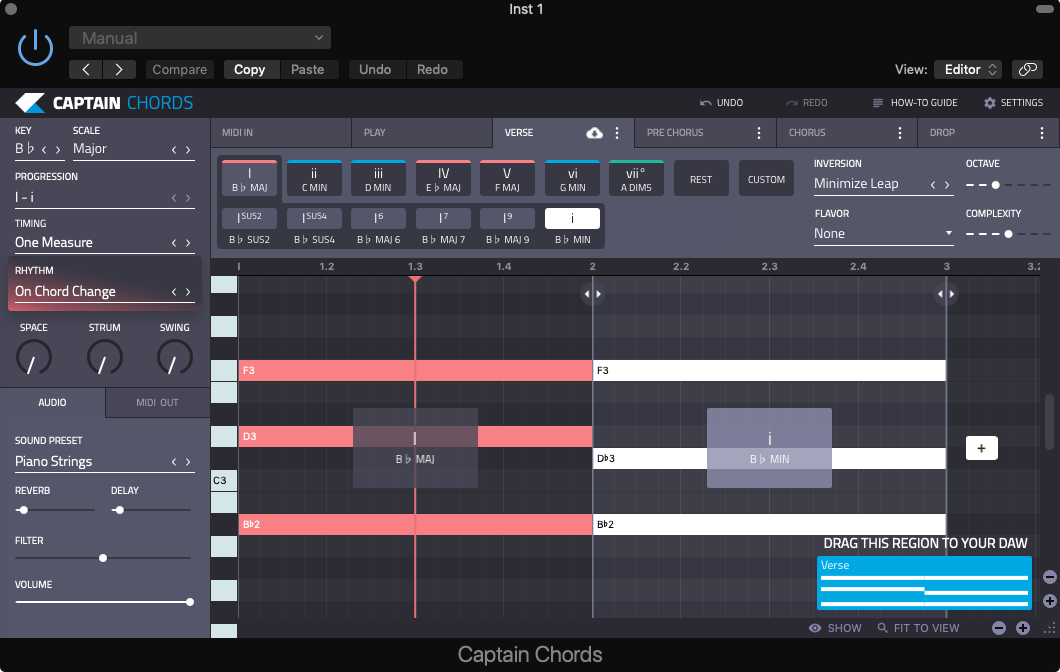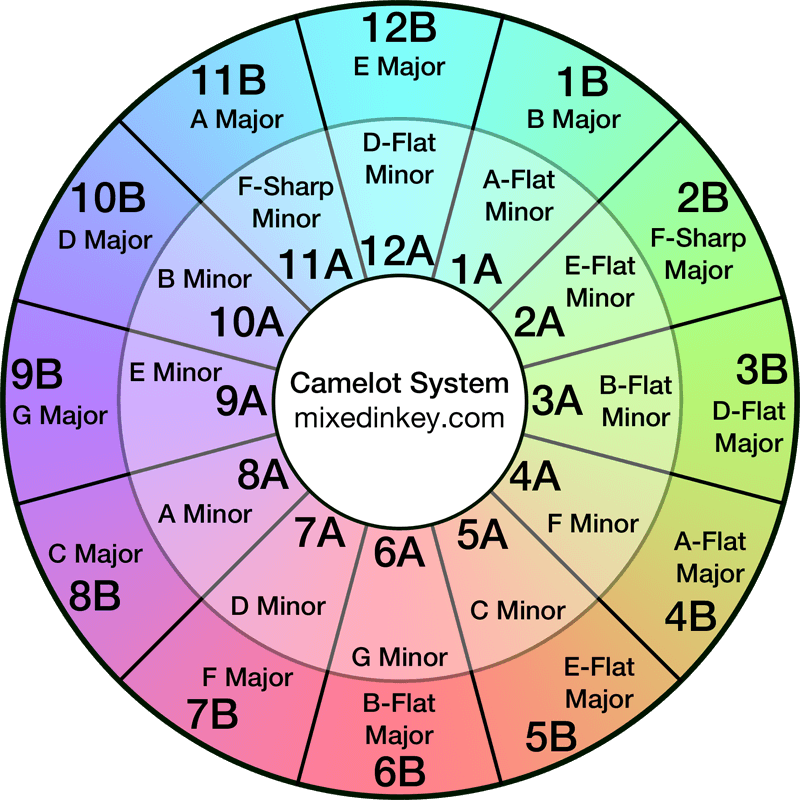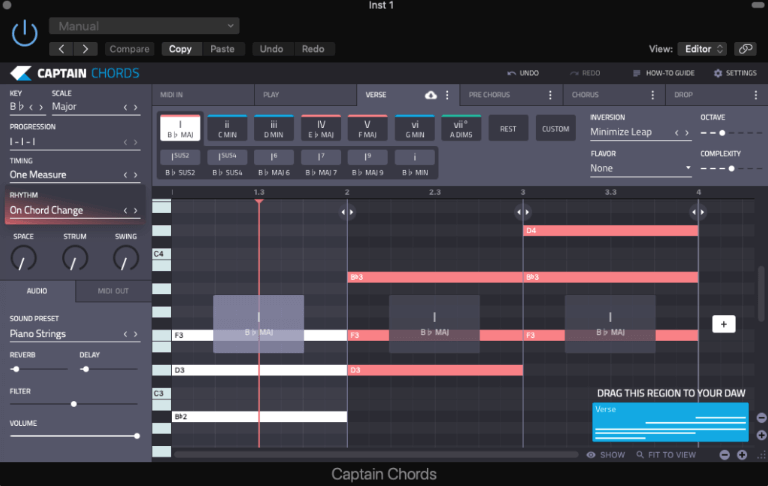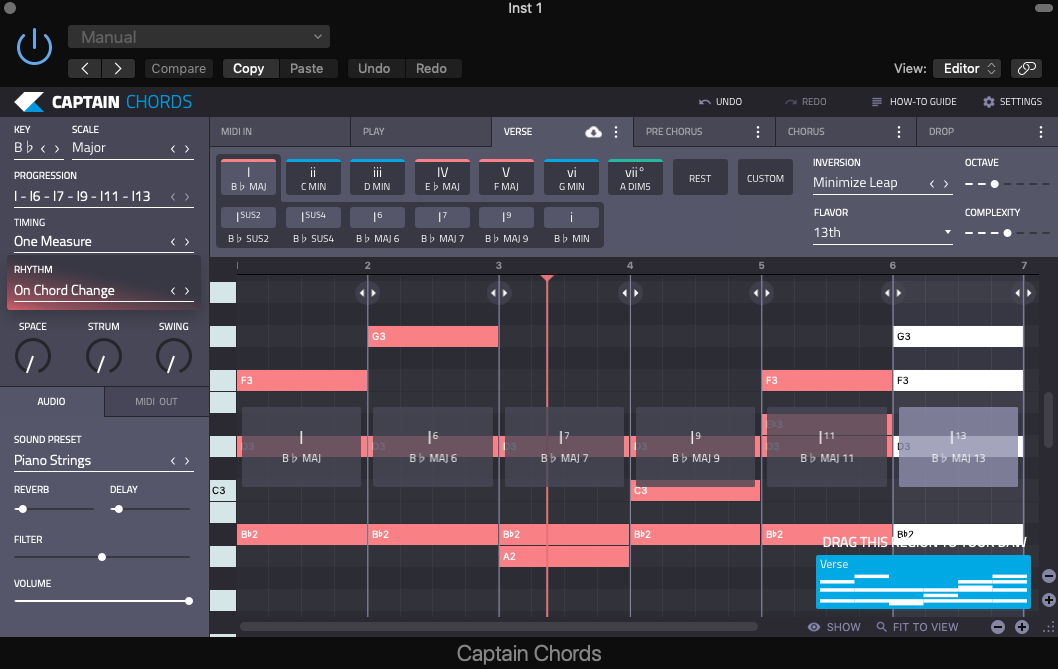The Chord of B Flat Major
A short guide to an unparalleled chord. Find out different ways to play it, what styles of music best suit it and what notes are in its diatonic scale.

Don’t Worry, B Happy
Chords have characteristics. Personalities, almost. The composer Schubert wrote a book about this, in which he characterized B Flat Major as ”Cheerful love, clear conscience, hope aspiration for a better world”. How delightful!
Try playing B Flat Major on your keyboard or guitar and you’ll hear the musical equivalent of a beaming smile!
Crowd-pleaser
B Flat Major is possibly the most cheerful chord in existence, so you won’t find much funeral music in this key.
However it can be used in a wide range of compositions, from the glossy pop of songs like Britney Spears – Baby One More
Time, and Eiffel 65 – Blue
to classics of rock like Queen – Bohemian
Rhapsody or Chuck Berry –
Johnny B. Goode .
Look through the list of songs in B Flat Major here
and you’ll be amazed at the number of all-time classics in this key. It can deliver a truly rousing, dynamic
punch, making it perfect for Rock, Gospel, Pop, Hard House, Trance and Singer/Songwriters seeking to get everyone
singing along!
For the same reasons, it’s generally not an ideal root key for music with a deeper, more soulful tone, such as Deep
House, Soul, R n’ B, EDM and melancholic music.

Let’s analyze B Flat Major. Like all tonal chords, it’s generic form is a triad – or three notes played simultaneously – and it starts with it’s own root note, which is, of course, B Flat.
The magic number
Every triad starts with the root note and ends with a perfect fifth – five notes up from the root. The middle note is really important as it decides whether the chord is Minor or Major. Check out this simple chart below:
| B Flat Chord | Root (AKA ‘Tonic’) | Interval 1 | Interval 2 |
|---|---|---|---|
| Major | B Flat | D | F |
| Minor | B Flat | D Flat | F |
The chart shows us the simple difference between the B Flat Major and B Flat Minor chord. It also tells us that B Flat Major consists of three notes: B Flat, D and F.
Write chords faster with Captain Chords
- Write your own chord progressions
- Apply rhythms to your chords
- Set your Key and Scale for the entire song
- Explore different chords and discover your favorite combinations
- Compose music and write your own songs
- One touch plays 3 notes of the chords
Relatively speaking
Every Major chord has a relative Minor chord that complements it. If you’ve ever seen the Mixed in Key Harmonic Mixing Wheel (AKA the ‘Camelot’ Wheel) you’ll be familiar with the way chords ‘connect’ based on their position on the wheel.

The outer ring has the Major chords, the inner ring has Minors. Look at the top left of the wheel. 6B = B Flat Major, and is positioned next to 6A = G Minor. These are ‘relative’ chords – very useful when writing chord progressions as you know they’ll sound ‘correct’ even when played on top of one another.
Minimize the Leap
When playing B Flat Major, you can change the way it’s played and play either of the triad notes at the bottom. Check out the video example below, where you can see and hear the difference between the three ways of playing the same chord. The sound is almost the same and the pitch is identical. These are sometimes referred to as inversions.
Check out how B Flat Major’s inversions sound below:
These inversions are scored in different ways:
| Root | First Inversion | Second Inversion |
|---|---|---|
| D | F | B Flat |

Why invert?
Inverting chords gives musicians different ways of playing the same chord in different positions on the keyboard – minimizing the distance between chords. That’s where the term ‘Minimize the leap’ originates – something you can easily replicate in Captain Chords.
Flavors and Suspended Chords
We can make B Flat Major more complex and interesting by adding additional notes. It’s like adding spice to your chord – so be careful not to overdo it.
These additional notes come from the overall diatonic scale of the note, which takes a bit of time to learn.
Each one adds its own flavor, which is why they are sometimes referred to as flavors. It’s super simple to add these flavors in our Captain Chords software – you just select the flavor you want and audition it live within your composition.

The diatonic scale of B Flat Major
Flavor:
| Root | Third | Fifth | 6th | 7th | 9th | 11th | 13th |
|---|---|---|---|---|---|---|---|
| B Flat | D | F | G | A | C | E Flat | G |
Suspended:
| Root | Third | Suspended 2nd | Suspended 4th | Fifth |
|---|---|---|---|---|
| B Flat | D | C | E Flat | F |
There are fewer potential suspended notes, since they fit in between the root and fifth. There are two options, in fact, which makes sense if you think about it: 1 is taken by the root note, B Flat. 3 is taken by the first interval, and 5 is taken by the perfect fifth. This leaves just 2 and 4 as possible destinations for our suspended notes.
Write your own Chords using Captain Chords
It’s super easy to create your own ideas from scratch. Visit the official Chords homepage and see how it will help you explore music and write your own original productions.
